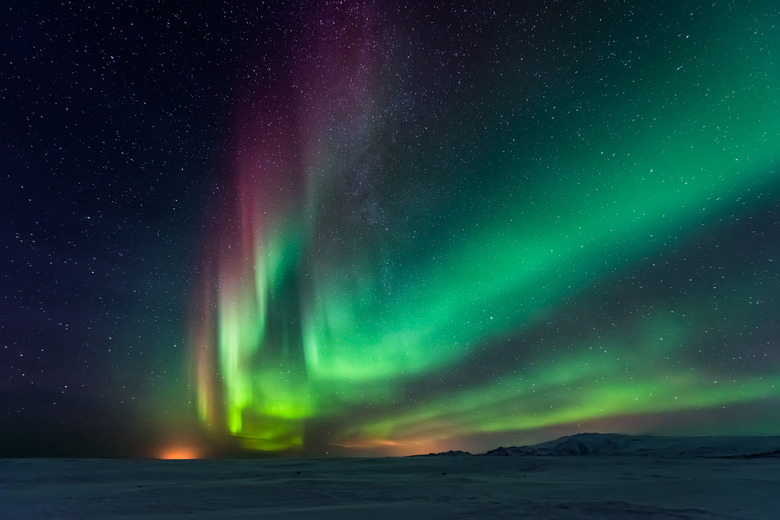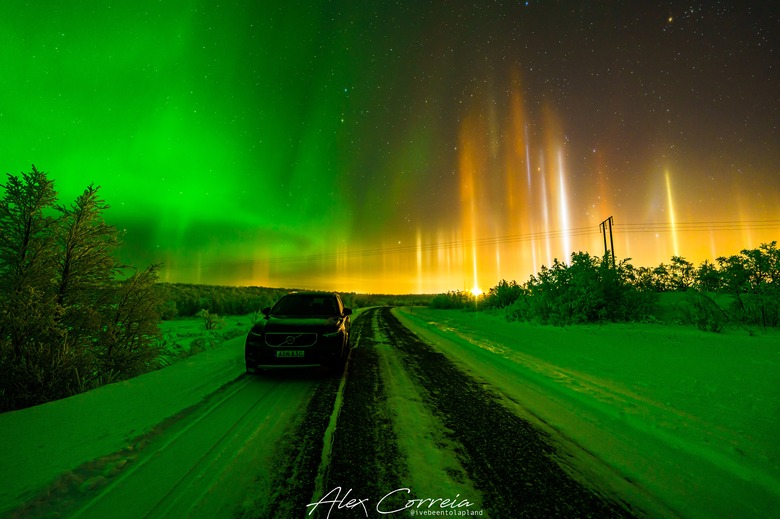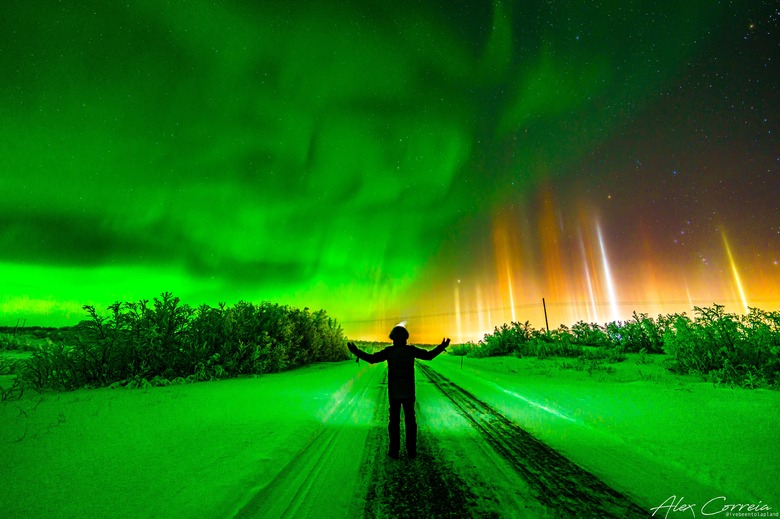Dazzling Photo Shows 2 Night Sky Phenomena That Look Like A Sci-Fi Movie
A new Northern Lights photo showcases two of nature's most dazzling night sky phenomena side by side.
Brazilian photographer Alexandre Correia originally shared the photos on Instagram. In it, you can make out the beautiful effects of the Aurora Borealis, the Northern Lights. Opposite of the Northern Lights, though, the lights of the city seem to blend into light pillars, another beautiful night sky phenomenon.
Two night sky phenomena caught side-by-side in new Northern Lights photo
Correia says that he was originally only focused on capturing the Northern Lights photo, as the lights were stronger in that direction. However, he says that when heading back to where he was staying, he noticed the lights of the city taking the shape of light pillars.
"I saw a great opportunity to take a unique picture," he says (via PetaPixel).
The new Northern Lights photo is indeed something unique. The photo, which can be seen in full detail on Correia's Instagram, shows both phenomena side by side. On one side, you can see the wavy lines that make up Aurora Borealis. On the other, the lights from the city seem to jut up into the sky, like pillars of light.
It's a beautiful sight and one that Correia says he hasn't edited very much. In a Facebook post featuring the Northern Lights photo, Correia shared that it was captured in a single shot on a 4s. IOS800 f1.8 14mm lens.
He also shared that he's new to post-processing and didn't put the photo through Photoshop. Instead, he says all he did was increase the exposure, brightness, colors, and shadows in Lightroom.
What are light pillars?
Just about everyone has heard of Aurora Borealis, the sky phenomena featured in the left half of this Northern Lights photo. But you might not have heard of light pillars. These rare night-sky phenomena are like Aurora Borealis in that they only appear under certain conditions.
Unlike the Northern Lights, which are the result of charged particles from the Sun hitting the Earth's magnetosphere, light pillars occur much closer to the planet's surface. You can even see Aurora Borealis from the International Space Station!
These strange columns of light appear when light from multiple sources reflects off ice crystals falling through the air. The beams can extend above and below their light sources, creating the effect we see in Correia's latest photograph.
But this isn't the only Northern Lights photo that Correia has managed to capture. You can see a ton of other great photos of the sky's various lighting phenomena on his Instagram page.


